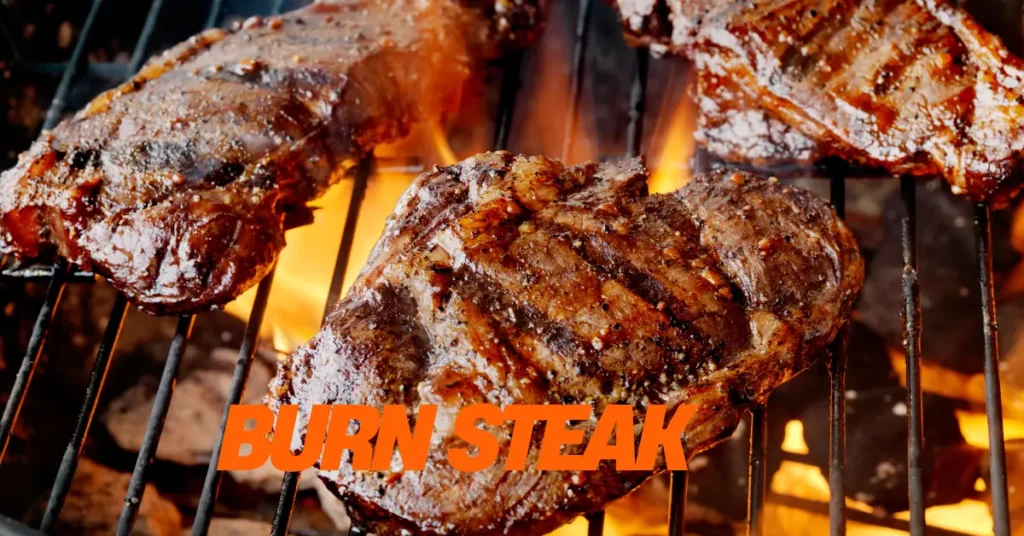This post may contain affiliate links. If you use these links to buy something we may earn a small commission. Thanks.
Freezer burn is a common issue that affects frozen food, including steak. It occurs when food is exposed to air inside the freezer, leading to dehydration and oxidation. While freezer-burned steak is still safe to eat, its quality deteriorates significantly, affecting its taste, texture, and overall appeal. If you’ve ever pulled a steak from the freezer only to find strange discoloration and dry patches, you might be dealing with freezer burn. Understanding how to identify freezer burn and how to prevent it can help you enjoy a better dining experience.
In this article, we’ll explore the telltale signs of freezer burn on steak, its causes, its impact on food quality, and practical ways to prevent it.
Visual Characteristics of Freezer Burn Steak
When steak is affected by freezer burn, it undergoes noticeable physical changes. Here are some key visual and textural characteristics to look for:
1. Discoloration
One of the most obvious signs of freezer burn is a change in the steak’s color. Unlike fresh, rich red meat, freezer-burned steak often has patches that appear:
- White or grayish: The affected areas may lose their vibrant color and turn pale or ashy.
- Brown or tan hues: Oxidation can cause certain sections of the steak to darken, making it look unappetizing.
- Dull and faded appearance: Instead of the bright, fresh look of properly frozen meat, freezer-burned steak may appear lifeless.
2. Dry, Leathery Texture
Freezer burn draws moisture away from the meat, leading to a dry and tough surface. When you touch the affected steak, you may notice:
- A rough, leathery texture instead of the usual smooth and firm feel.
- Shriveled or hardened areas, making the steak uneven in texture.
- A brittle or flaky surface that crumbles when touched.
3. Ice Crystal Formation
Another common sign of freezer burn is the presence of ice crystals on the steak. These crystals form due to moisture loss and refreezing inside the freezer. You may notice:
- Frosty patches on the steak’s surface.
- Ice accumulation in and around the meat fibers.
- A lack of juiciness when thawed, as the moisture has already been drawn out.

Causes of Freezer Burn on Steak
Understanding why freezer burn occurs can help prevent it. The primary causes include:
1. Improper Wrapping or Packaging
Steak that is not properly sealed is vulnerable to air exposure, leading to moisture loss. Common packaging mistakes include:
- Using thin plastic wrap that allows air to seep in.
- Not wrapping the steak tightly enough.
- Storing it in a non-airtight container.
2. Exposure to Air
Air exposure is the number one culprit of freezer burn. When meat is not sealed properly, air comes into direct contact with the surface, causing oxidation and dehydration. Vacuum sealing or using heavy-duty freezer bags can significantly reduce air exposure.
3. Long-Term Storage
Even with proper packaging, steak that sits in the freezer for too long can still develop freezer burn. Over time, the moisture inside the meat migrates to the surface and evaporates, leaving the steak dry and tough. It’s recommended to consume frozen steak within 3 to 12 months for the best quality.
4. Fluctuating Freezer Temperatures
Temperature fluctuations inside the freezer can speed up the freezer burn process. If the freezer temperature constantly shifts, the moisture in the steak may thaw and refreeze, leading to ice crystal formation and moisture loss. Keeping the freezer at a steady 0°F (-18°C) helps maintain food quality.
Impact on Quality and Safety
Freezer-burned steak isn’t necessarily harmful, but it does affect the eating experience. Here’s what you need to know:
1. Is Freezer-Burned Steak Safe to Eat?
Yes, freezer-burned steak is safe to eat as long as it has been stored properly and hasn’t exceeded the recommended storage time. However, the taste and texture will be compromised.
2. Changes in Taste and Texture
Freezer burn affects steak in the following ways:
- Flavor loss: The steak may taste bland or slightly off due to oxidation.
- Chewy or tough texture: The loss of moisture makes the steak dry and difficult to chew.
- Potential odor: Prolonged freezer burn can cause a stale or slightly metallic smell.
3. Can You Salvage Freezer-Burned Steak?
While you can’t fully restore the original quality, you can try:
- Trimming off affected areas before cooking.
- Marinating the steak to add moisture and improve flavor.
- Slow-cooking or braising to tenderize the meat.
Prevention Tips
Preventing freezer burn requires proper storage techniques. Here are some effective ways to keep your steak in top condition:
1. Use Proper Packaging
- Wrap steak tightly in plastic wrap or aluminum foil.
- Place it inside a vacuum-sealed bag or heavy-duty freezer bag.
- Remove as much air as possible before sealing.
2. Maintain Proper Freezer Temperature
- Keep the freezer at 0°F (-18°C) or lower.
- Avoid frequent door openings to prevent temperature fluctuations.
3. Store Steak for the Right Duration
- Consume frozen steak within 3 to 12 months for optimal quality.
- Label packages with the date of freezing to keep track of storage time.
4. Freeze in Small Portions
- Divide steak into meal-sized portions before freezing.
- This reduces thawing and refreezing, preventing moisture loss.
5. Use Freezer Paper or Vacuum Sealing
- Freezer paper adds an extra layer of protection against air exposure.
- Vacuum sealing is the best way to prevent freezer burn, as it removes almost all air.
Conclusion
Freezer burn can ruin the quality of steak by causing discoloration, dryness, and texture changes. While freezer-burned steak is still safe to eat, it won’t taste as good as a properly stored cut. Identifying the signs—such as white or brown patches, leathery texture, and ice crystals can help you determine if your steak has been affected.
By using proper freezing techniques, such as vacuum sealing, maintaining the right freezer temperature, and avoiding long-term storage, you can keep your steak fresh and delicious. If freezer burn does occur, you can still salvage the meat by trimming affected areas and using cooking methods that add moisture, such as marinating or slow-cooking.
With the right precautions, you can ensure that every steak you freeze remains juicy, flavorful, and ready for the grill or pan whenever you need it.
